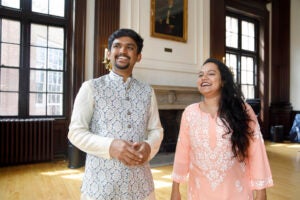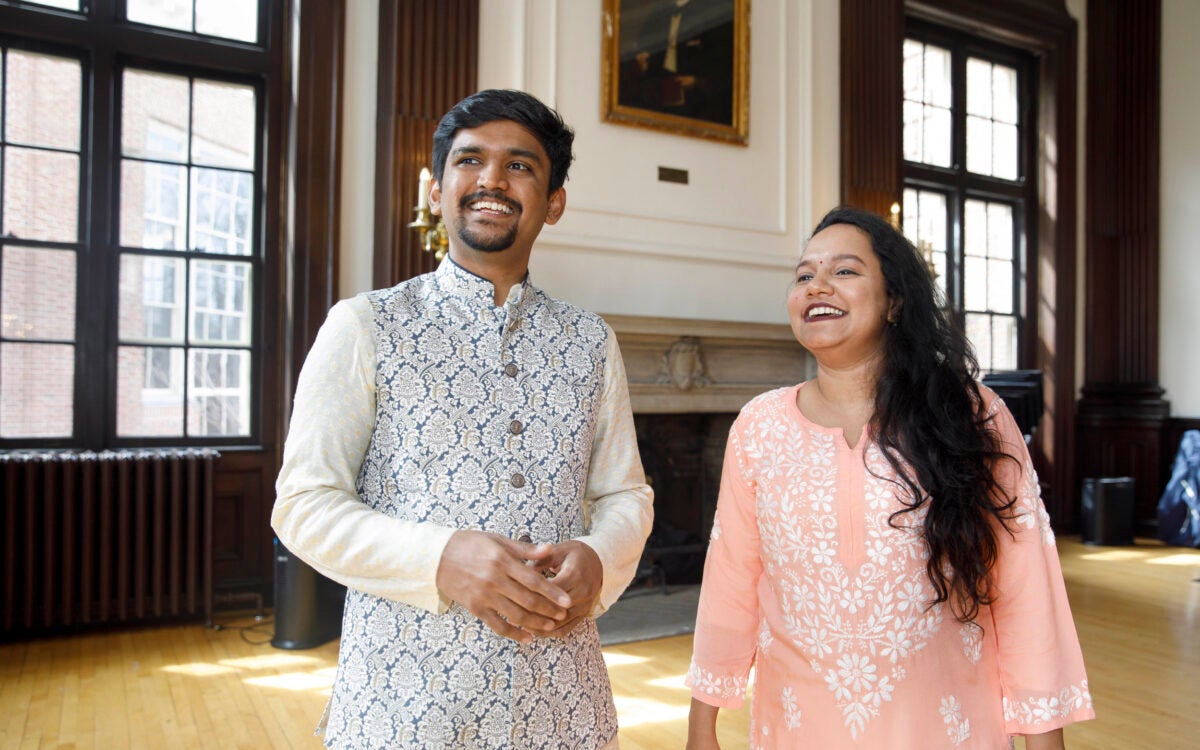Vanished kingdoms redux
Display of photographs chronicles the explorations of married adventurers
Janet Elliott, the daughter of a turn-of-the-century railroad tycoon and a member of New York’s social register, had her life pretty well mapped out for her, and aside from deciding which of the eligible young men of her class she would consent to marry, it wasn’t a life with a whole lot of choices.
When Frederick Wulsin, a 1913 Harvard graduate with a degree in engineering, asked for Janet’s hand in marriage, her father consented. One wonders what Elliott père would have said had he known that in four years’ time Frederick would be leading his daughter on mule back and camelback through bandit-infested deserts and remote mountain kingdoms.
In fact, neither Janet nor Frederick were comfortable with the lives for which they had been destined. Intelligent and imaginative, Janet wanted to enroll at Bryn Mawr, but her father told her categorically, “Ladies don’t go to college.” During World War I she declared her independence by volunteering with the Red Cross in France.
After Harvard, Frederick spent a year traveling in East Africa and Madagascar, collecting specimens for the University’s Museum of Comparative Zoology. He served in the army during the war, then returned to New York to take a job as an account executive with the Allied Machinery Company.
He and Janet were married by this time, and both felt stifled by the limited roles available to them. A new window of possibility opened for them when they heard explorer Roy Chapman Andrews, the man believed to be the model for Indiana Jones, lecture on his adventures in China.
Frederick decided that the life of an explorer and researcher was for him. They would travel to China and gather data on the country’s geography, flora and fauna, anthropology, and politics, never mind that China was in a period of political upheaval at the time. The couple’s connections allowed them to obtain numerous letters of introduction, and they set out for China in May 1921.
Settling in Beijing, the Wulsins hired a former cavalry officer named Mr. Wu to teach them Chinese. That summer they successfully completed a tour of Shanxi Province, traveling through rugged country and visiting monasteries and villages where the appearance of outsiders was an extremely rare event.
Their most ambitious trek took place in 1922 when they traversed the Alashan plateau, visited sites in Mongolia and Tibet, and returned to Beijing, a journey of nine months. The trip was sponsored by the National Geographic Society, and in order to qualify for the funding, the couple had to master the art of photography.
Janet took at least half of the 1,900 photographs chronicling their explorations. They include pictures of Mongol tribespeople, wedding photographs of a wealthy Mongol couple, the great Tibetan Buddhist monastery at Labrang, and many other scenes of a China still unchanged by contact with the West.
The Wulsins also collected numerous animals and botanical specimens. A team of Chinese taxidermists stuffed the animals on the spot, and the crated carcasses had to be trundled along the rough trails before being shipped off to the Smithsonian’s National Museum of Natural History. The photographs eventually found their way into the archives of the Peabody Museum of Archaeology and Ethnology at Harvard. There they remained until Janet’s daughter, Mabel Cabot, rediscovered them after her mother’s death in 1963.
The photographs and accompanying written materials provided a thrilling context to the stories Janet Wuslin had told her daughter about the four years she had spent in China. Cabot found the stories enthralling, even though she noticed that “looking back on China always made my mother very melancholy.”
That sadness was connected with the fact that Frederick, her companion on those extraordinary journeys, had abruptly divorced her in 1929, citing “absolute incompatibility of temperaments.” Devastated by the divorce, Janet withdrew into seclusion for several years. Eventually, a friend introduced her to Richard Hobart, a banker and collector of Chinese art. The two hit it off and were married in 1932. Cabot is their only child.
Cabot, a former journalist, public relations practitioner, and social secretary to President Ronald Reagan, was amazed by the photographs, which she first saw in 1975.
“I was very proud and very amazed at her daring and courage. I was fascinated, and I knew there was a story there,” Cabot said.
Her busy professional life did not allow her the time to really dig into the archives, however, and that research had to be postponed for another 20 years. Eventually, Cabot did begin the job of coordinating the photos, letters, diaries, and other materials and composing a narrative of Janet and Frederick’s adventures. The task took her four years.
The result was a book, “Vanished Kingdoms: A Woman Explorer in Tibet, China & Mongolia, 1921-1925,” (Aperture, 2003). It includes a selection of hand-colored lantern slides that Cabot found in a shoebox under a desk at the Peabody and which were then digitally cleaned for publication.
“Luckily, the technology happened at the moment we most needed it,” she said.
A traveling exhibition of the Wulsins’ colored lantern slides, now transformed into large-scale prints, was organized by the Peabody Essex Museum in Salem, Mass., and opened there in 2004. The exhibition opened at Harvard’s Peabody Museum on April 11, following a successful national tour. The collection will be on display through Sept. 9.
‘Vanished Kingdoms: The Wulsin Photographs of Tibet, China & Mongolia,’ an exhibition of 31 images, will be on display at the Peabody Museum of Archaeology and Ethnology, 11 Divinity Ave., Cambridge, through Sept. 9.




